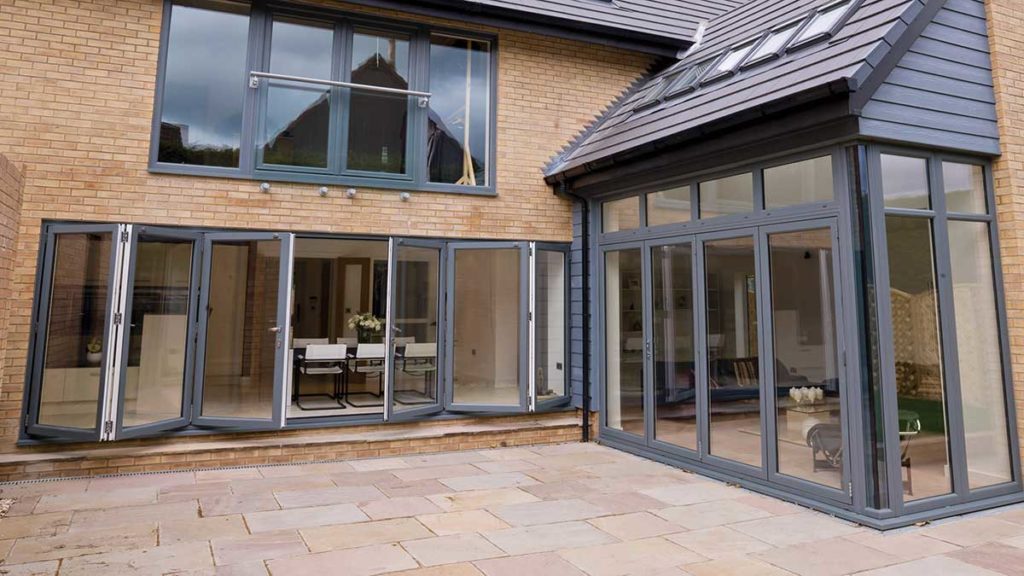Selecting doors for your home, the choice between uPVC (unplasticized polyvinyl chloride) and wooden doors is pivotal. Each material offers distinct advantages and considerations, making it essential to align your decision with your home’s style, budget, and maintenance preferences.
Understanding the Materials
uPVC Doors
uPVC doors are crafted from a rigid plastic material, known for their durability and low maintenance. They often feature multi-point locking systems, enhancing security. Available in various colors and finishes, uPVC doors can mimic the appearance of wood, providing versatility in design.
Wooden Doors
Wooden doors, made from solid hardwood or engineered wood, are renowned for their natural beauty and timeless appeal. They offer excellent insulation properties and can be customized with various stains, paints, and hardware to suit different architectural styles.
Advantages of uPVC Doors
Low Maintenance: uPVC doors require minimal upkeep. They don’t need regular painting or sealing, making them ideal for homeowners seeking convenience.
Durability: Resistant to moisture, doors won’t warp, rot, or swell, even in humid conditions. This makes them suitable for various climates.
Energy Efficiency: The insulating properties of uPVC help in maintaining indoor temperatures, potentially reducing energy bills.
Security: Many uPVC windows come with multi-point locking systems, offering enhanced security against break-ins.
Cost-Effective: Generally, uPVC door handle are more affordable than their wooden counterparts, both in initial cost and long-term maintenance.
Disadvantages of uPVC Doors
Aesthetic Limitations: While available in various finishes, doors may lack the warmth and character of natural wood, potentially clashing with traditional home designs.
Environmental Concerns: uPVC is a plastic-based material, raising concerns about its environmental impact, especially regarding production and disposal.
Potential for Fading: Over time, exposure to sunlight can cause doors to fade or discolor, affecting their appearance.
Advantages of Wooden Doors
Aesthetic Appeal: Wooden doors offer a classic and elegant look, adding character and warmth to any home. They can be customized with various stains and paints to match interior decor.
Superior Insulation: Wood naturally provides excellent thermal and acoustic insulation, contributing to energy efficiency and noise reduction.
Longevity: With proper care, wooden doors can last for decades, often becoming more attractive with age as they develop a natural patina.
Eco-Friendly: When sourced responsibly, wood is a renewable resource, and wooden doors are biodegradable, making them an environmentally friendly option.
Customization: Wooden doors can be easily customized in terms of design, size, and hardware, offering versatility to suit personal preferences.
Disadvantages of Wooden Doors
High Maintenance: Wooden doors require regular maintenance, including painting or staining, to protect against moisture, pests, and wear.
Susceptibility to Weathering: Without proper care, wood can warp, crack, or rot, especially in areas with high humidity or extreme weather conditions.
Cost: High-quality wooden doors can be expensive, both in terms of initial investment and ongoing maintenance.
Vulnerability to Pests: Wood can be susceptible to damage from termites and other pests if not properly treated.
Making the Right Choice for Your Home
The decision between uPVC and wooden doors hinges on various factors:
Budget: uPVC are more cost-effective upfront and require less maintenance, making them suitable for budget-conscious homeowners.
Aesthetic Preferences: If you desire a traditional or rustic look, wooden doors provide timeless appeal and can be customized to fit your home’s style.
Climate Considerations: In areas with high humidity or extreme weather, doors offer durability without the need for extensive maintenance.
Environmental Impact: For those prioritizing eco-friendliness, responsibly sourced wooden doors are a renewable and biodegradable option.
Maintenance Willingness: If you’re prepared for regular upkeep, wooden doors can offer long-term beauty and durability.
Choosing the right elements for your home—whether it’s a property, renovation, or décor—can feel overwhelming. With countless options and decisions to make, it’s important to approach each choice thoughtfully. Here are some key considerations to help you make the right decisions for your home.
1. Understand Your Needs
Every home is unique because every family has different needs. Ask yourself:
How much space do I really need?
What are my lifestyle priorities? (e.g., work-from-home setup, outdoor space, storage)
Do I need flexibility for future changes, such as a growing family or aging in place?
Clarifying your needs first ensures that every decision supports your daily life.
2. Set a Realistic Budget
It’s easy to get carried away with aesthetics or high-end features. Start with a clear budget:
Factor in purchase costs, renovations, and ongoing maintenance.
Leave a buffer for unexpected expenses.
Consider value vs. cost—sometimes spending a bit more upfront saves money long-term.
3. Prioritize Location
Whether buying or renovating, location matters. Consider:
Proximity to work, schools, healthcare, and amenities.
Neighborhood safety and community vibe.
Potential for future value appreciation.
4. Focus on Quality
Invest in quality materials and workmanship where it matters most:
Durable flooring, efficient appliances, and solid construction improve comfort and reduce future repair costs.
Cosmetic upgrades can come later, but structural and functional elements should be the top priority.
5. Think Long-Term
Your home is an investment, not just a place to live:
Consider resale value even if you plan to stay long-term.
Think about energy efficiency, sustainable materials, and smart home features.
Anticipate lifestyle changes and how your home can adapt.
Conclusion
Both uPVC and wooden doors have their merits. uPVC doors are ideal for those seeking low-maintenance, durable, and cost-effective solutions. In contrast, wooden doors appeal to homeowners desiring aesthetic charm, customization, and natural insulation properties. Assessing your specific needs, preferences, and circumstances will guide you in selecting the best door material for your home.


